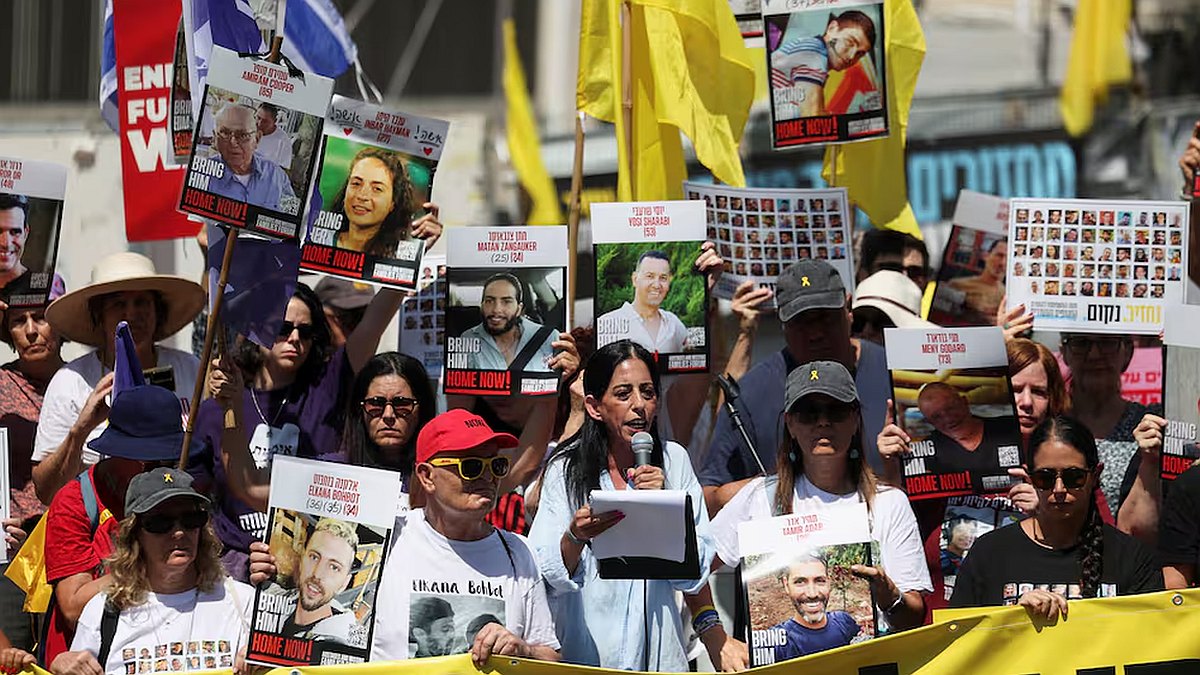Kevin Sijniensky: On the one hand, I think The Government completed its first year with many achievements. They took on a fairly complex situation and several of those issues were resolved, perhaps, faster than most of us expected. I believe that the pillar of the Milei program is fiscal balance and that was achieved in a very short time. Furthermore, they managed to convince society and the market that it is a non-negotiable element. And, on the other hand, a great achievement is having lowered inflation from the 25% it marked in December to 2.4%. It is clear that the Government is focused on that objective and takes measures to put further downward pressure on inflation. Afterwards, I believe that another of the great merits is having moved forward with the deregulatory agenda. An example is the issue of the rental law, what was done with the supply law, controlled prices, etc. They improve the business climate in Argentina, although perhaps people expect some major structural reform, but all these micro modifications go in the direction of optimizing competitiveness.
Q.: What are the pending issues that you see the Government has ahead of it?
KS: There are still some outstanding debts going forward. The exchange rate gap is at very low levels, although there are still cross checks between the two markets and we don’t know what the genuine exchange rate is going to be when they are lifted. On the other hand, still we continue with negative reservationsbut the entire resolution of the importers’ debt was done quite successfully and the Central Bank (BCRA) managed to buy dollars, especially in the first part of the year. In general, as the most important outstanding debt, what I see is the exit from the exchange rate trap and continuing with the accumulation of reserves, which are two things that go quite hand in hand.
Q: And, beyond the outstanding features, what are the weak points of this model?
KS: One sees that the real economy has more difficulties than the financial world, it is difficult for activity to regain momentum and there are problems with the industry. Some sectors recover and others do not. And this is related to negative reserves and the fact that, to the extent that they do not finish release the trapit will be difficult for large investments to come in. Yes, money is going to come, especially linked to the energy and mining sector, benefiting from the Large Investment Incentive Regime (RIGI)but, for the rest, getting out of the stocks is going to be important. At the same time, the real exchange rate is somewhat below the historical average and that is an issue.
It happens that, In a context where the economy is opening up, and with a real exchange rate that is quite appreciated, there are some sectors that suffer. I think that is a weakness of the model.
The Government thinks that this will be compensated with lower taxes and the entire deregulation agenda, but this is going much slower than the appreciation of the exchange rate. So, in that sense, there are some sectors that are harmed. And the recovery, as we are seeing, is not the same for all sectors. Agriculture, energy and mining are doing quite well. There are industrial sectors that are a little better than others, but construction is still behind, especially because there is no public work and because costs in dollars have risen.
Q: And how do you see the deterioration in consumption?
KS: The recovery of consumption is a little slower than that of other variablesmainly, because salaries grow in real terms, but what we economists call disposable income, which is the part that remains available after paying expenses, which are not elastic like public services, taxes and other things. Those were the items that had the most inflation in recent months. Disposable income has not yet recovered much and that is what affects consumption the most. Yes, we see that credit is growing, rather for durable consumption. Everything else is still a little further behind.
Salary fall from consumption
The evolution of consumption worries Econviews analysts going forward.
Scope
Q: But, then, do you see a recovery?
KS: I believe that the recovery began and in the third quarter the economy grew more than we expected and the economy will continue to recover. What happens is that it is going to be a slow but sustained process, we believe.
Q.: Argentina wants to regain a better role at a global level, return to the debt market and many say that it will recover the “investment grade.” Do you think the Government will achieve that objective?
KS: We saw a very important rally in sovereign debt, mainly associated with the fact that The Government convinced the market that fiscal balance is non-negotiable and every month it shows that it is effectively achieving it. And, on the other hand, they convinced that next year’s dues, in one way or another, will be paid. Actually, the bonds had been very backward in that context and that explains all the recent rise. Meanwhile, to see a country risk level of around 500 or 550 points, which will allow the Government to once again enter international markets, what is missing is the exit from the stocks. That can be the final boost and, perhaps, if there is an agreement with the International Monetary Fund (IMF) next year, which provides some fresh funds and allows the exit from the stocks to be a little more successful, it can also help.
Q: Do you think consumption will recover? How could it affect inflation?
KS: The consumption series indicate that it has stopped falling and is on a plateau. We believe that, if the real salary continues to recover as it has in recent months, there will be a rebound in consumption and it will also be driven by credit in pesos to the private sector, which in July, for example, grew at a rate of more than 10% in real terms and, in November, it increased a little more than 5%, it slowed down a little, but continues to grow at a good monthly rate. It is true that real wages are increasing at a slower rate than in previous months, but we believe that they will continue to rise and next year there will be a rebound in consumption.
Q: And, going forward, how do you think this could impact inflation? What is going to happen to the rates?
KS: We make a calculation of how aligned relative prices are compared to 2017, which was a year in which Mauricio Macri’s government had more or less aligned rates and some other prices. There’s still a bit of fine-tuning left, but most of it is done. So, the effect on disposable income that I was talking about before may be diluted. On the other hand, when demand recovers, it will probably put a little more pressure on the disinflation process. But, if we see the latest data, goods are already running at 2%. It is not going to be linear, it may be that next month they will go up a little, then go down again. But, today, the issue of inflation is more about services, which had been ignored until now. Thus, if the exit from the CEPO is delayed, we will see better inflation data in the coming months.
Q.: Regarding the stocks, for next year, how do you see the evolution of the dollar?
KS: We think that the exit from the stocks is rather an exchange rate unification. We think it will be at the end of next year. Today, there are still quite strong cross-restrictions on the exchange markets. And, furthermore, the blend dollar implies that 20% of exports are settled in the MEP. So, there is some mismatch between supply and demand in that market and that partly explains the decline. Money laundering was also an important player in all of this because it worked as an influx of capital, which did not come from outside, but from the mattresses, but it generated US$20 billion, which today is in the banks. Furthermore, the liquidation of agriculture is quite strong for this time of year and the Government managed to align expectations.
Today few doubt that the “crawling peg” of 2% will continue or will go down to 1% next year. Inflation is already approaching a level closer to 2% and interest rates have dropped and are also converging towards those levels. All of this helps the parallel exchange rate to go down because it helps exporters settle and want to stay in pesos and importers try to postpone import payments to stay in pesos. So, the Government achieved this dynamic and, for now, it is maintained.
Q.: Aren’t you worried about the impact that the strong influx of imports that the Government is promoting to control inflation will have on the local industry?
SK: Economic opening with a relatively appreciated real exchange rate is something that worries us. We believe that this model is going towards a strong weight and that, combined with commercial opening, is complicated because there are sectors that are going to suffer. There are sectors that benefited for many years from the high level of protectionism and practically got married in the zoo. So, it’s going to be a topic to follow. The Government accelerated with the issue of trade opening due to a more inflationary issue. I think he is using it as a tool to lower the price level.
But I don’t know if there is a program behind it to increase competitiveness. So, yes, it is an issue to follow and it is something that worries us. On the other hand, there are many industries that need imported inputs and the current policy will favor them because they will be more competitive, above all. I believe that the industrial export sector may have benefited from the opening because they need many products from abroad.
Source: Ambito




